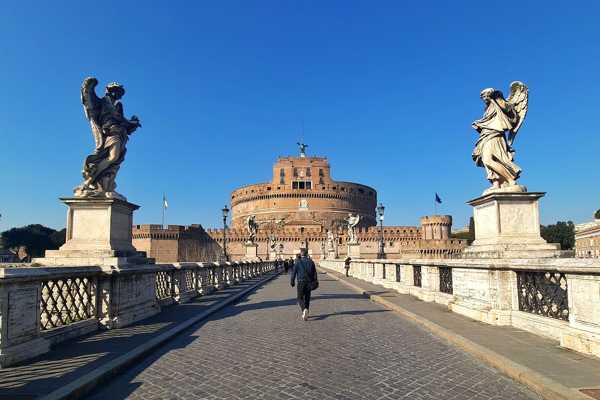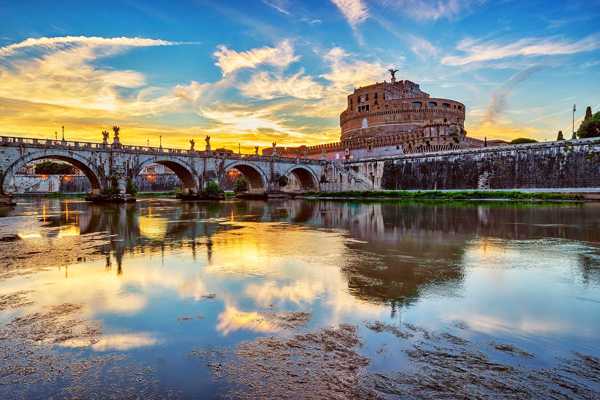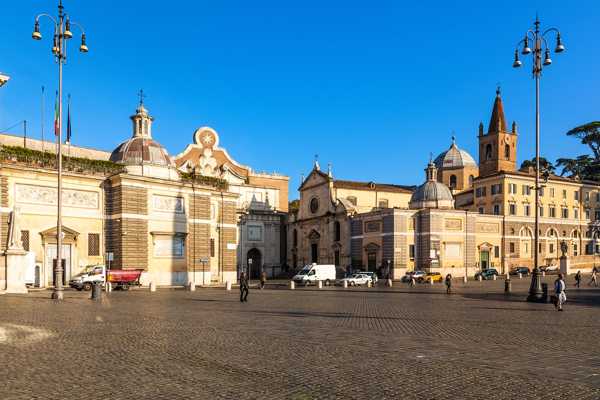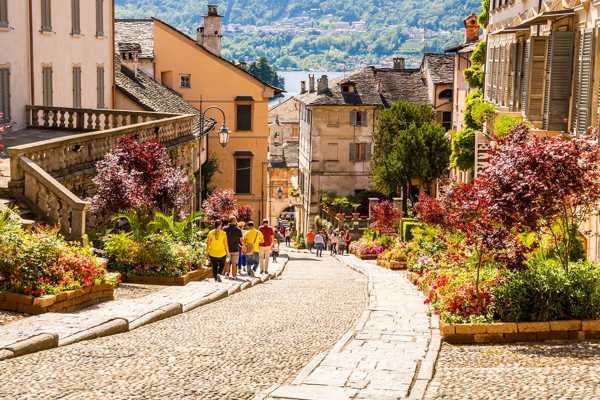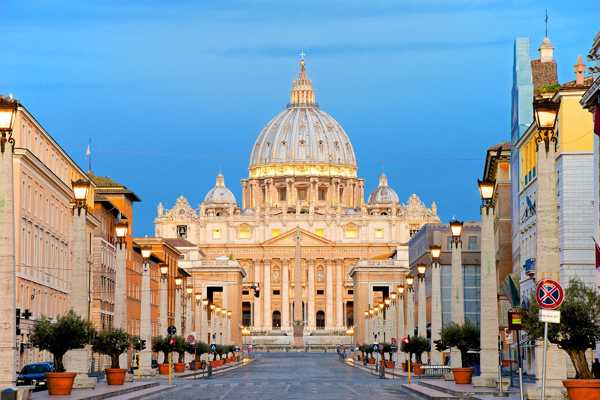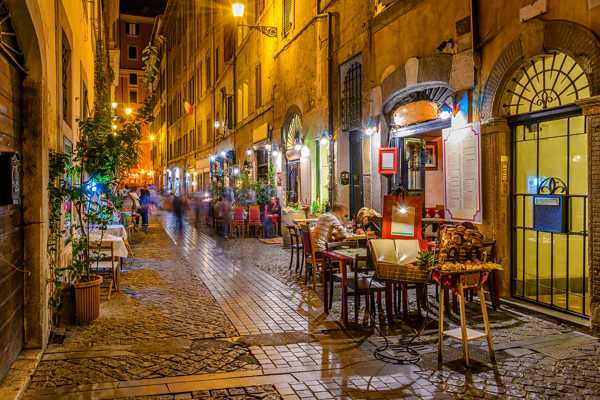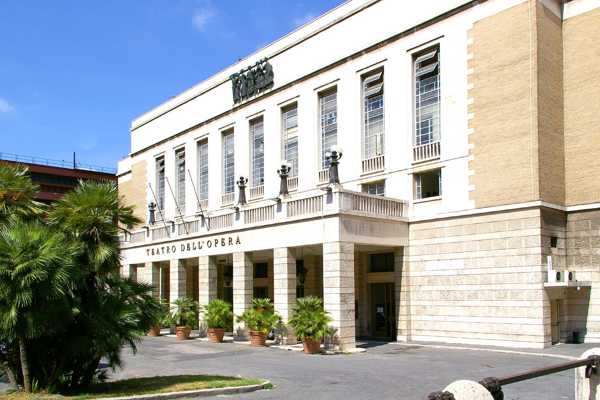The Pantheon offers a look at the spiritual history of ancient Rome from ancient days through modern Christianity, and it is one of the best-preserved of Ancient Roman structures. It has seen continuous use since it was originally constructed, even today being used as a Roman Catholic Church dedicated to St. Mary and the Martyrs, and is informally called the Santa Maria Rotunda by locals.
A visit to the Pantheon lets you participate in modern Catholic ceremonies, view the tombs of two different kings of Italy and one queen plus many other important historical figures and artists, and see stunning architecture that is thousands of years old. You can learn about the principles that went into building this temple and why they were applied. You can also view gorgeous sculptures, frescoes, paintings and artwork. It's an educational and stunning place to visit for adults and kids.
Pantheon in Rome - one of the highlights of 10 Iconic Buildings and Places in Rome and How to Visit Rome in Less Than 24 Hours (Read all about Rome here)
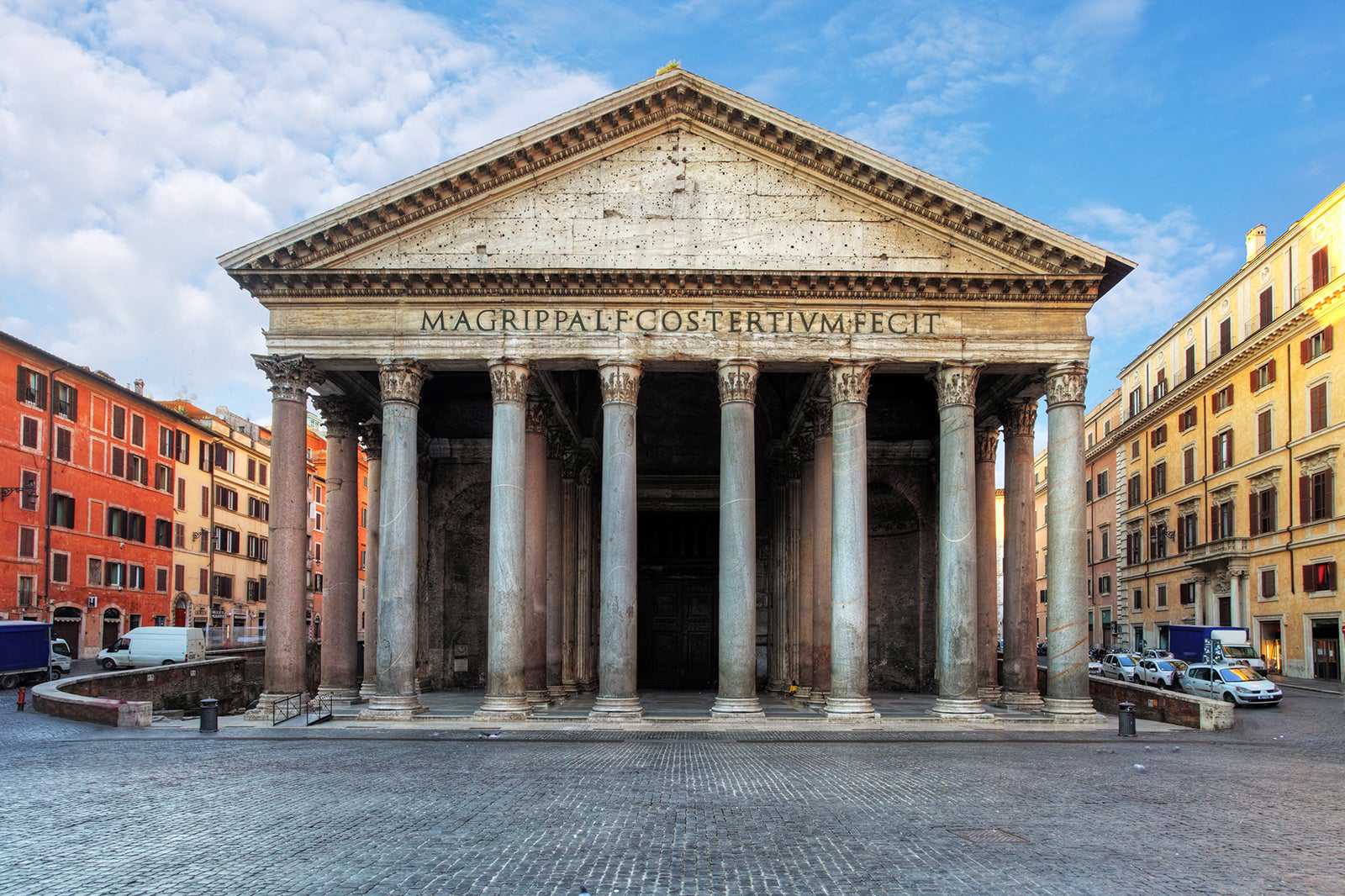
The History of the Pantheon
The Pantheon has stood for more than 2,000 years as an expression and representation of Rome’s glory. It was built between 25 and 27 BCE by Agrippa and dedicated to the twelve gods and the living Sovran. The current building, it is believed, resulted from major renovations decreed by the emperor Hadrian between 118 CE and 125 CE, and is the only building from ancient Rome that has remained completely intact throughout all the centuries.
By 608 CE, the Roman Catholic Church took over the Pantheon under the auspices of Pope Boniface IV, and the remains of many martyrs that were at the time housed in the catacombs beneath the city were moved to a permanent home in the Pantheon. The temple was re-consecrated as a Catholic Church dedicated to St. Mary and the Martyrs.
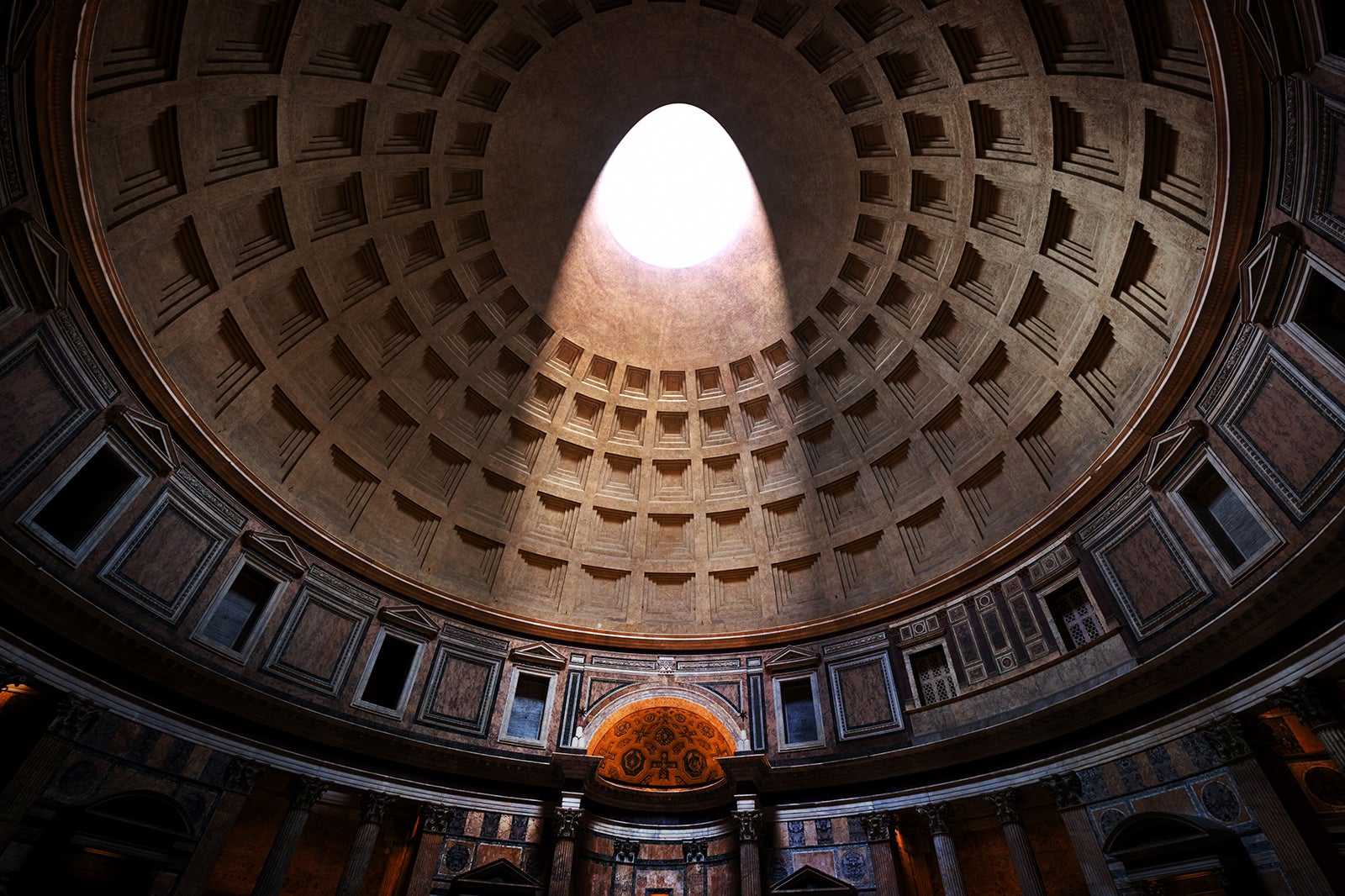
Highlights of the Pantheon
The first highlight of the Pantheon appears as you approach the vast five columns outside. Above these columns, you will see the inscription "Marcus Agrippa Luci filius consut tertium fecit." This is a declaration that it was built by Marcus Agrippa. Around the outside, you'll see bronze panels surrounding the dome’s top. These were placed over 2,000 years ago when they covered the cupola’s entire outside. Constantine I had most of them removed to be smelted for other uses, and those at the top are all that remain.
Inside the Pantheon, you'll be astounded by the shaft of light that beams through the 9-meter diameter oculus at the top in different formations every day of the year. You can also visit the tombs of King Vittorio Emanuele II, King Umberto I, Queen Margherita, and Raphael, plus those of many famed martyrs who died in the Colosseum.
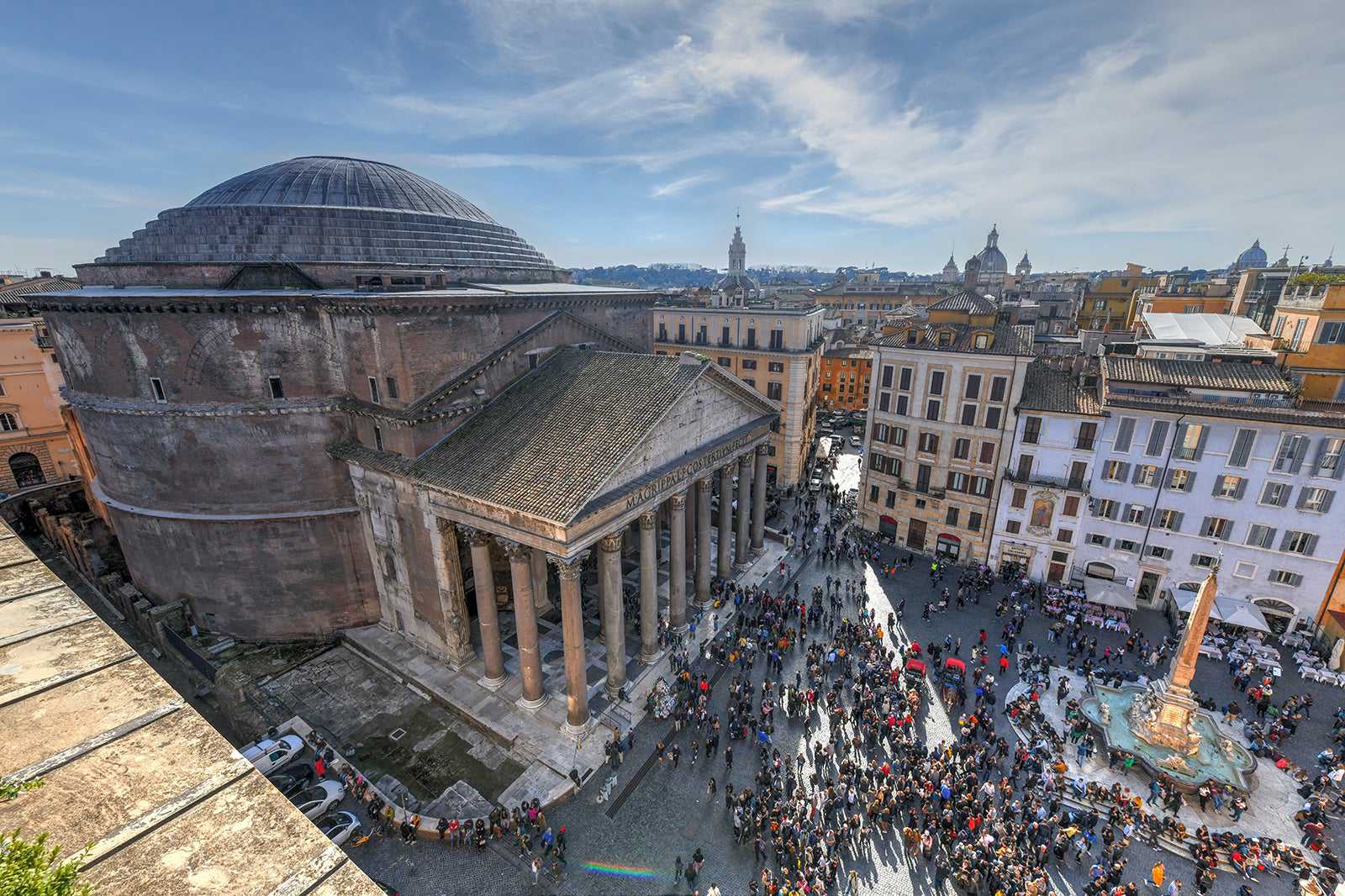
Good to know about the Pantheon
The Pantheon is a working church and important site for the Catholic religion, so they ask that you keep your voice down while exploring the inside, and to avoid touring during services. To get the most out of your visit to the Pantheon, you can book a guided tour. It's accessible by metro, which stops at the Barberini along Line A, or by several different city buses. At the desk, you can pick up audio guides or get information about what to see and the various liturgical activities that go on.
A gift shop onsite lets you shop for a wide range of gifts, books, souvenirs, and other items exclusively designed for the Pantheon. Admission is free and does not require advance booking, but to keep crowds down on behalf of worshippers, the number of people that come in at once is limited, usually resulting in a line.
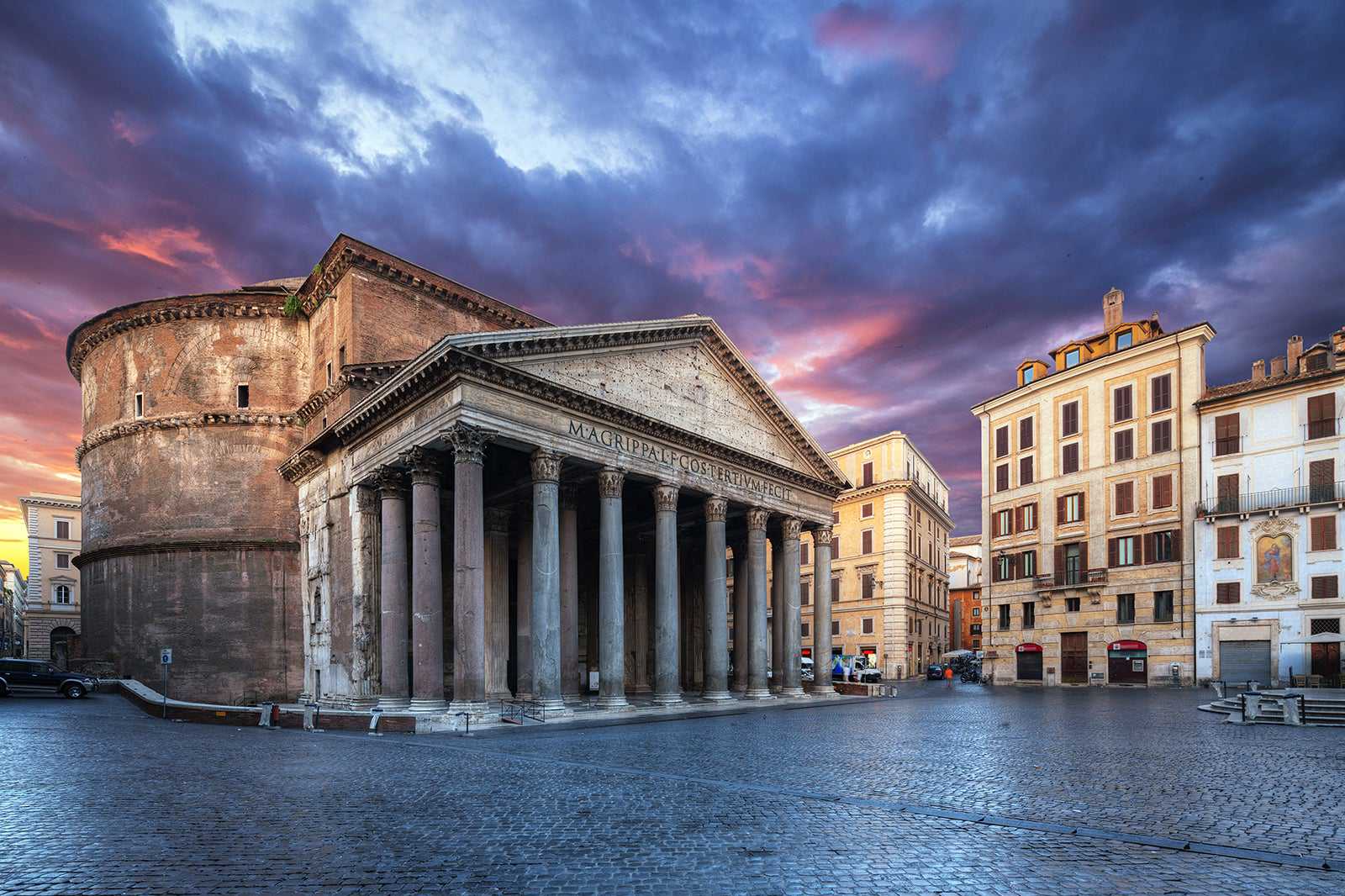
Pantheon in Rome
Adresse: Piazza della Rotonda, 00186 Roma RM, Italy
Åbningstider: Daily from 9 am to 7 pm
Telefon: +39 (0)06 6830 0230











